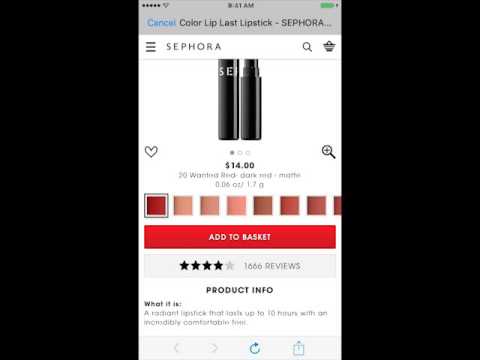8 Marketing Trends Every Marketer Should Know About (2 of 2)
The present article is delivered in two parts. Read part 1 to discover the first four marketing trends: slow marketing, people-based marketing, emotional marketing and empathy-based marketing.
If you’ve read the first part (I hope you have!), let’s continue with the final 4 marketing trends.
5. Neuromarketing
Neuromarketing is the application of neuroscience to marketing. Neuromarketing includes the direct use of brain imaging, scanning, or other brain activity measurement technology to measure a subject’s response to specific products, packaging, advertising, or other marketing elements. In some cases, the brain responses measured by these techniques may not be consciously perceived by the subject; hence, this data may be more revealing than self-reporting on surveys, in focus groups, etc.
Traditional marketing relies on quizzes, interviews and focus groups to discover whether their customers liked or disliked their products in terms of packaging, colours, imagery, functionality etc.
The problem with this method of gathering information is that people are easily influenced by uncorrelated factors: the weather, their emotional state, whether they are relaxed or stressed and so on. This means the results are distorted and unreliable more often than not.
With neuromarketing, marketers gain knowledge and insights into the brain’s subconscious reactions.
![]()
The brain’s responses to marketing stimuli are true and reliable because they are objective. That is why we see many ads featuring giggling babies, smiling people and beautiful individuals. These visuals trigger positive reactions: they are designed to attract and maintain the viewer’s attention long enough to establish brand awareness and finally, sales.
Brands also use neuromarketing strategies to set prices, decide on brand colours and website layout, build marketing campaigns on the psychological principles of influence and persuasion etc.
Learn more about the principles of influence and persuasion: 6 Psychological Ways to Increase your Event Registration.
6. Mindful Marketing
It’s common knowledge that early humans lived off their land by practising agriculture and hunting. Whatever they weren’t able to supply for themselves in terms of food or other items necessary in every household, they obtained by exchanging produce and various items with others. It’s called barter.
With the evolution of our society, the barter was replaced by producing or manufacturing goods with the purpose of selling them for money. Enter marketing.
As you can see in my short description above, the history of marketing starts early as a part of our own history of human evolution.
One of the first definitions of marketing, in the late 1800s, states that marketing is the process of moving goods from producer to consumer with an emphasis on sales and advertising. It’s marketing 1.0: product-centred and overall seen as an integral part of a business.
In the 1950s, Philip Kottler, one of the world’s leading authorities on marketing defines marketing as follows:
The science and art of exploring, creating, and delivering value to satisfy the needs of a target market at a profit. Marketing identifies unfulfilled needs and desires. It defines, measures and quantifies the size of the identified market and the profit potential. It pinpoints which segments the company is capable of serving best and it designs and promotes the appropriate products and services.
This definition shifts the attention from the product to the customer as a target market; it speaks of needs and desires while maximising profit for the company. It’s marketing 2.0 where marketing is less product-centred and more customer-focused; marketing remains inside the business industry but acquires elements of social science.
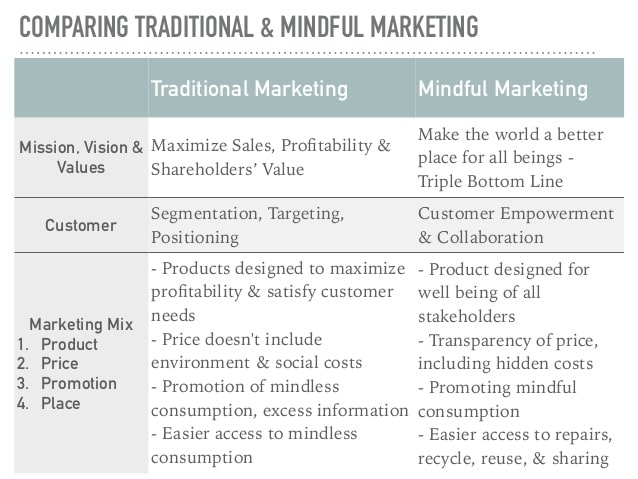
image source: slideshare.net/ShaliniBahl
Some experts say we are now in stage 3.0: the stage of the mindful marketing.
What is mindful marketing?
While researching for this trend, I found the following quote of Casey Sheahan, former CEO at Patagonia, the American clothing company:
We want people to look at their own lives and live in an examined way and again question whether you really just want that product or do you really need it because it’s cold this winter.
That’s what mindful marketing is all about: companies inviting their customers to consume mindfully instead of mindlessly. These companies are aware of their impact on the environment, our society and our world at large and strive to reduce or undo the damages.
Mindful marketing is human and values-centred.
Here are some of the most important features of mindful marketing:
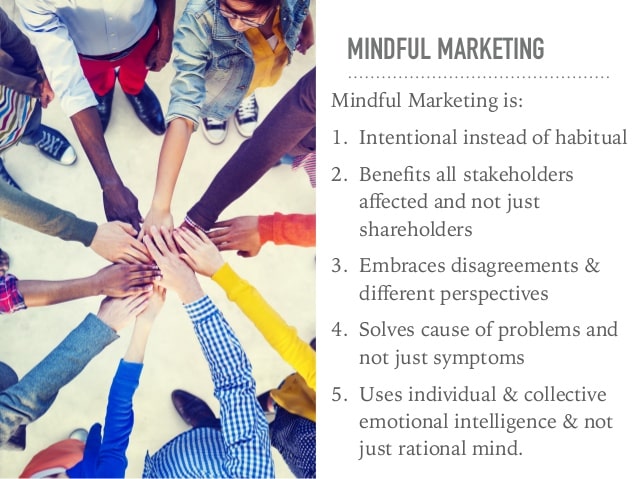
source: slideshare.net/ShaliniBahl
Can you think of any mindful marketing campaigns?
7. Omnichannel Marketing
We are in the age of technology. The pervasiveness of technology has influenced our society and our lives at great length. I cannot think of any industry that hasn’t undergone changes in recent years due to tech developments.
Retail is one of the industries which learned a painful lesson that said: Adapt or die.
The way customers purchase products and the way companies market and sell their products also changed profoundly.
Omni-channel marketing seamlessly integrates the different communication channels that businesses use to communicate with customers. This approach uses the customers’ perspectives and interests to optimize the consistency of the company’s marketing messages. By uniting the strengths of each communication channel, marketing teams can use omnichannel marketing to deliver a more consistent and effective brand message.”
Retail companies communicate with their audience on multiple channels: company website, social media accounts, traditional and digital advertising, messaging platforms, apps etc.
While companies can be found on various mediums, no customer wants to jump from one space to another to complete their purchase.
That’s why Sephora customers can browse products in the company’s e-store and make purchases inside Messenger with the help of a bot.
Another example is Nike inviting sneakerheads to experience an innovative way to purchase its Momofuku shoes using AR and geolocation technology.
In both examples, customers enjoyed a seamless purchase experience.
Learn more: Retail Trends For 2019
8. Content Shock
Content shock is a term coined by Mark Schaefer in his 2014 blog article: Content Shock: Why content marketing is not a sustainable strategy.
In his article, Mark Schaefer states that the volume of content available on the internet is increasing exponentially.
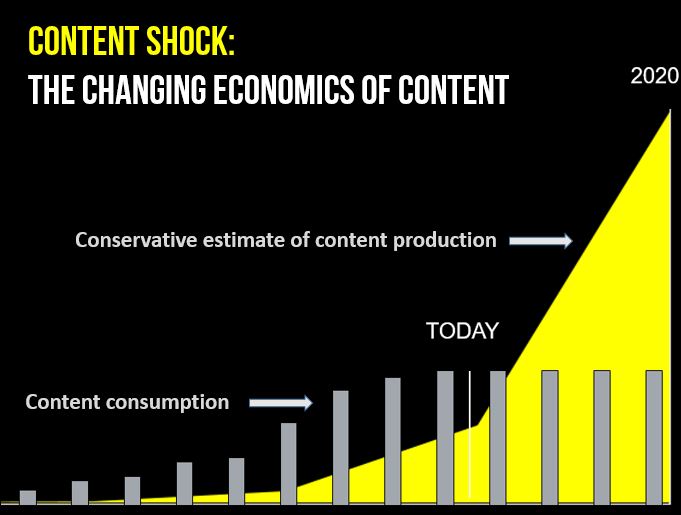
image source: businessesgrow.com
He predicts that the amount of information on the web will increase by 500% in the next five years. Yet our capacity to consume it is limited. How many hours a day can we dedicate to consuming content? Three hours? Ten hours?
In economic terms: the demand and supply forces in content marketing are so terribly out of balance that the situation will lead to content shock.
Content Shock:
The emerging marketing epoch defined when exponentially increasing volumes of content intersect our limited human capacity to consume it.
Mark Schaefer
At the time, the content shock concept was received by the content marketing industry as a novel idea and concept.
His article attracted an amazing amount of media attention which spun over a period of three weeks.
Content Shock: Winners and Losers
Limited attention and increased volume of content mean more options for customers to choose from. Do more options also mean better options? Only the customers can tell.
From the perspective of a company, the content shock means a real danger of slipping into oblivion buried under terabytes of content.
You might think the solution is this:
Companies can avoid content shock if the content they produce is of real value to their customer base. As Mark mentioned in a recent Medium article: no, the problem is not too much bad content; the problem is too much good content.
So how can companies avoid getting caught in content shock? Instead of struggling to ride the wave, be the one raising it!
According to Mark, the answer lays in content niches.
Here is what Mark Schaefer recommends:
- Find an unsaturated content niche;
- Rapidly fill that niche with helpful, high-quality content;
- Keep producing content in that topical niche that is relevant, consistent, and superior.
Wrap up
Marketing has come a long way since the 1950s, there’s no doubt about it. Technology developments are responsible for numerous changes within the industry: the internet boom in the early 90s, personal computers in every home, search engines, mobile phones and smartphones for everyone, communicating through texting and messaging, social media, bots, AI, VR and AR. People have changed in the last decade so brands had to follow.
In these two articles, I’ve gone through all 8 marketing trends: slow marketing, people-based marketing, emotional marketing, empathy-based marketing, neuromarketing, mindful marketing, omnichannel marketing and content shock. What is the red thin line across all of them? Neither the brand nor the product lies at the core of any one of these trends, it’s the individual.
I hope the information laid out here was helpful. My purpose was not to go in deep but to provide you with enough information to inspire further research.
Do you know of other marketing trends I haven’t mentioned here?
Let me know!
8 Marketing Trends Every Marketer Should Know About (1 of 2)
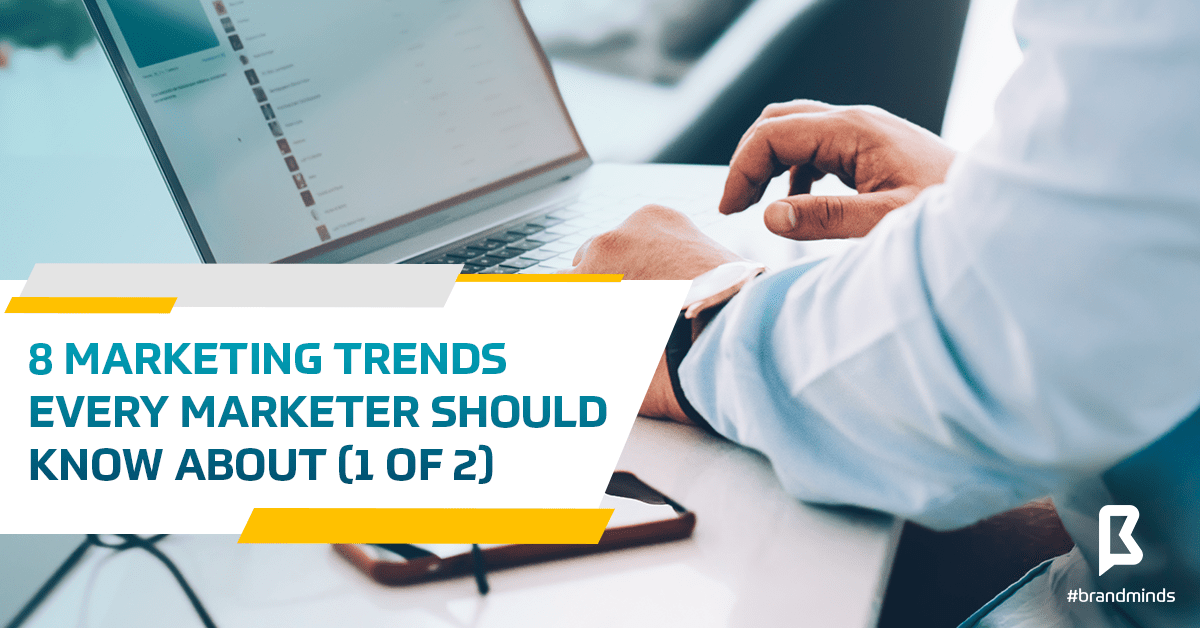
In recent years, marketers have come across various marketing trends and movements.
In this article, I talk about 8 marketing trends:
- slow marketing,
- people-based marketing,
- emotional marketing,
- empathy-based marketing,
- neuromarketing,
- mindful marketing,
- omnichannel marketing
- content shock.
So many marketing trends! You may be familiar with some of them while the others are unknown.
If you feel a bit confused, don’t worry, you are not alone! When I came across the first one, I made a note on my smartphone to remember to learn more about it. Then I came across the second, then the third. By the fourth term, it dawned on me:
If I feel I need to bring myself up to speed with all these marketing trends, I’m probably not alone. It would help me and my fellow marketers more if I brought them all together into one article!

This is a two-part article.
Allow our platform to send you notifications to make sure you read part 2 by clicking on the red bell in the corner of the page.
So let’s dive in!
1. Slow Marketing – A philosophy and a process
I read about slow marketing on Ann Handley’s blog. A quick search on Google showed that the first article on slow marketing was written back in 2012 by Tad Hargrave.
Slow Marketing is a movement and a philosophy and much to its name, it is taking its time to become mainstream.
In Tad Hargrave’s opinion, the slow marketing movement is this:
- It takes time to build relationships with your customers; as a marketer, you need to acknowledge it and take it slow;
- Take your time to plan for the long run instead of the now – long-term versus short-term;
- Instead of pressuring your clients to make a buying decision, give them time to figure out if they are the perfect fit;
- Listen before you jump into the conversations, take your time to know your customers.
Ann Handley finds a new meaning to the ASAP acronym. She suggests we should replace As Soon As Possible with As slow As Possible (AsAP).
Here is how she defines AsAP:
As slow As Possible means slowing down at the best moments to deliver the best possible results.
Ann Handley
While Tad defines slow marketing as a philosophy, Ann takes a different approach.
She advocates for balancing the fast pace of today’s marketing with slowing down moments:
- Decide when to slow down and when to go fast;
- Take your time to find your focus;
- Slow down when you need to take in knowledge and understand it (about your customers, about your industry or market);
- Speed up when you need to produce something important;
- It’s about having a lasting impact on others.
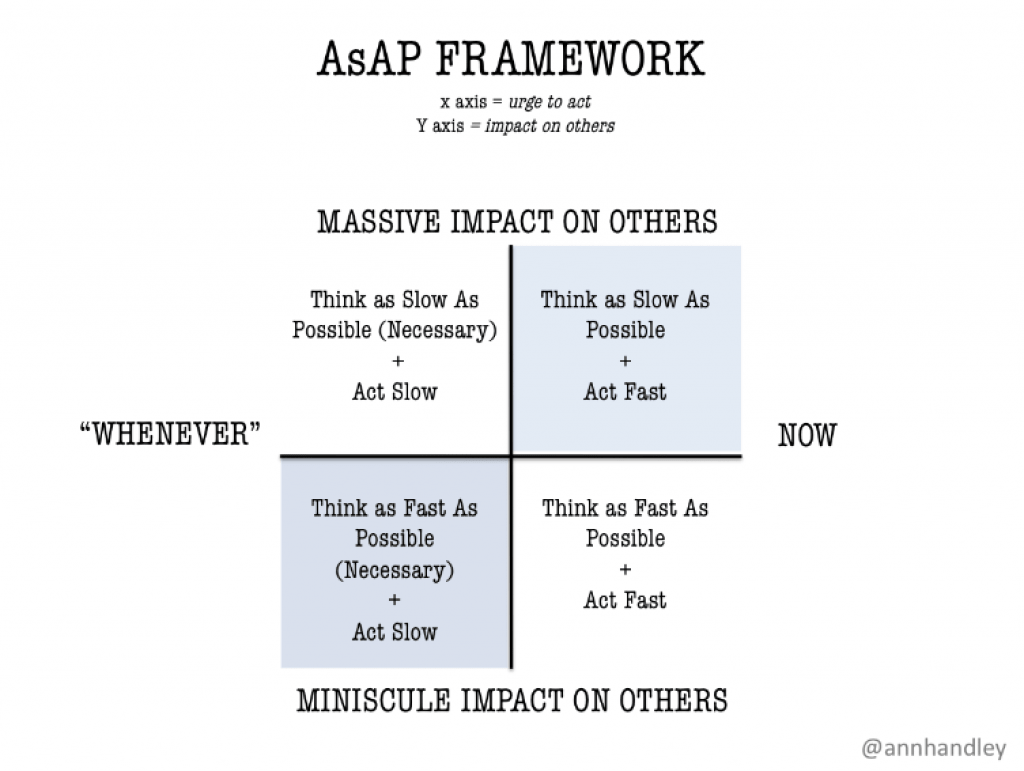
2. People-based Marketing – Delivering experiences to people, not devices
What is people-based marketing?
It’s a topic of interest for many marketers like you and me (this question is on Quora) and also for large brands like Facebook.
People move seamlessly between devices: they search for products on a desktop and purchase online on their smartphone.
The customer journey doesn’t follow a straight line anymore; it registers many ups and downs. It’s becoming increasingly harder to reach “the right person, at the right place, at the right time, with the right message”.
Facebook sees people-based marketing as a solution to this problem. As an advertiser, Facebook switched from cookie-based advertising which distorts campaign results to people-based marketing which allows for better measurement and planning.
With people-based data and tools, marketers are able to tie actions directly to real people wherever they may be and close the measurement gaps that exist with traditional cookie-based measurement—which doesn’t capture the full consumer journey.
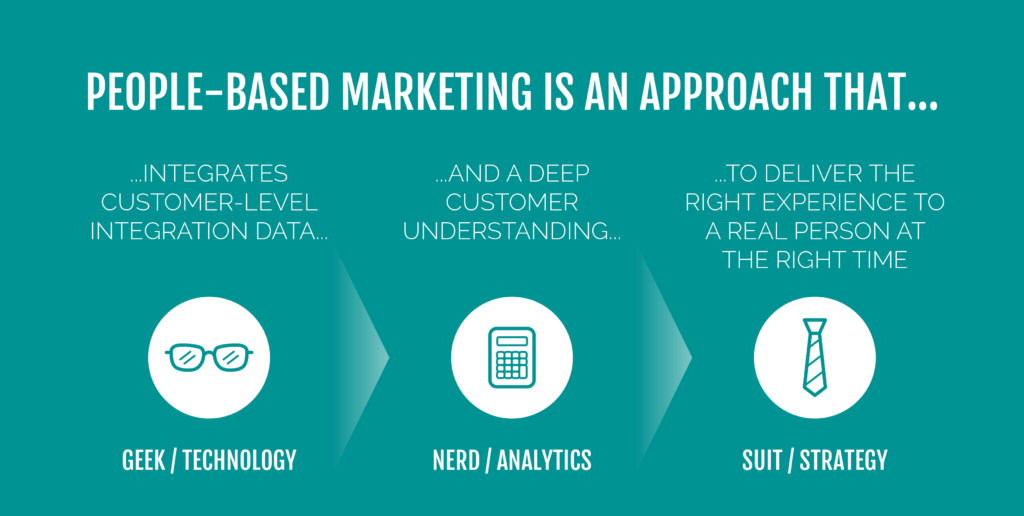
image source: thrivemedia.io
3. Emotional Marketing – Inspire, act and tell a story
Consumers make buying decisions based on emotions, not information or hard facts.
The emotional marketing studies how to arouse emotions in people to induce them to buy a particular product/service.
Brands that have a complete understanding of their customers’ range of emotions are successful. Putting together the emotional profile of their customers base is the foundation upon which brands build campaigns with maximum impact.
Emotional marketing refers to marketing and advertising efforts that primarily use emotion to make your audience notice, remember, share, and buy. Emotional marketing typically taps into a singular emotion, like happiness, sadness, anger, or fear, to elicit a consumer response.
Brands turn to emotional marketing when their goal is to inspire people to act, to create a movement/community or to tell a story.
As with our friends and loved ones, we connect with those brands which show to us they are aware of our struggles, our aspirations and goals, our problems.
We connect with and support brands which lift us up through their messages. Why? Because they make us feel good about ourselves.
Dove is among the savviest brands leveraging emotional marketing in its campaigns.
4. Empathy-based Marketing – Connecting and building trust
Empathy-based marketing is about connecting and building trust with your customers.
Empathy is feeling the same as the other person.
Empathy-based marketing is about walking in your customer’s shoes to understand their experience and how we can better help them get what they want. You don’t want to think like the customer. You want to BE the customer.
Empathy happens when two people talk to each other. Through words and body language, they show they understand what the other is going through.
Show your customers you understand them by providing active listening.
Empathy-based marketing is about presenting your customers with solutions to their problems. It’s about helping them by providing valuable and useful content.

This article continues with part 2.

Join the Conversation
We’d love to hear what you have to say.
Get in touch with us on Facebook Group and Twitter.
